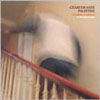 While it almost seems more of an experiment than a true composition at times, this 140 minute work shows the clown prince of minimalist drone working on live improvisations using a unique instrument, a double piano. And while sounding purely experimental at times, the work transcends the academics and is just as enjoyable to listen to as a work of art as it is a study of an instrument.
While it almost seems more of an experiment than a true composition at times, this 140 minute work shows the clown prince of minimalist drone working on live improvisations using a unique instrument, a double piano. And while sounding purely experimental at times, the work transcends the academics and is just as enjoyable to listen to as a work of art as it is a study of an instrument.
- Administrator
- Albums and Singles
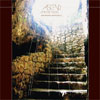 It comes as no surprise at all that this collaboration between Sunn O))) and Goatsnake's Greg Anderson and Gentry Densley from Iceburn is black and metallic. I think anyone would be completely floored if it were to be too insane of a departure from either artist's day jobs, and the influence of their main projects definitely shows through. But, aided and abetted by a slew of collaborators, Ascend has a style and character all its own, even with the obvious lineage from the participants, it is a very interesting work that stands on its own.
It comes as no surprise at all that this collaboration between Sunn O))) and Goatsnake's Greg Anderson and Gentry Densley from Iceburn is black and metallic. I think anyone would be completely floored if it were to be too insane of a departure from either artist's day jobs, and the influence of their main projects definitely shows through. But, aided and abetted by a slew of collaborators, Ascend has a style and character all its own, even with the obvious lineage from the participants, it is a very interesting work that stands on its own.
Anyone who sees Sunn O))) connected with an album expects some level of bowel churning sub-bass drone and Ample Fire Within is no exception. The opening rumbles of "The Obelisk of Kolob" cements this fact with the lugubrious low frequency guitar that opens it. However, the differences start to become more obvious when the slow, entrenched in swampy mud percussion section starts and the sounds become increasingly complex and layered, ending in a much more structured way than it began. The drone is representing on "V.O.G." as well, but lurking beneath slow martial percussion and what sounds like a dying bagpipe. This sludge metal take on William Wallace's marching music is later augmented with some sickly, anemic guitar soloing from Kim Thayil (yes, from Soundgarden) and Densely's restrained, focused vocals.
Gentry Densely's vocals appear on most of the tracks here, but differ greatly in style and technique. The jazz influenced guitar that opens and closes the title track are matched with more overtly "metal" vocals, sort of Cookie Monster style, but layered and processed enough to make them a different beast entirely. On "Divine" he channels a more angry, slightly less gruff version of Tom Waits that make an excellent match with more open, expansive sound that resembles current day Earth's melodic country/gospel drone played with the intensity of old school Sunn O))).
The closer, "Dark Matter," is perhaps the most experimental here, opening with a deep organ pastiche and distant, echo-y vocals that become more prominant as the mix gets thicker with raw guitar soloing, trombone (from Sunn/Earth collaborator Steve Moore) and eventually the slow, La Brea Tar Pits drumming from earlier. Again, there is another track, "Her Horse Is Thunder," that I didn't have a chance to hear thanks to Southern Lord's policy on promos, which I discussed at length in my review of Boris' Smile a few weeks ago, so I shan't reiterate here.
A lot of the promotion for this album has linked it from the fusion jazz of later Miles Davis to the slow grime of The Melvins, and while that's not immediately apparent on listening, it is definitely there in the more open experimentation and odd structures of the tracks which differ from both primary artists' usual projects. Greg Anderson isn't trying to throw down his best John McLaughin impression, but that vibe is still there. For those who find Sunn O))) and the like a bit too dull and monotonous, this is definitely more accessible and varied, though it lacks that full on subsonic warfare elements that stuff like White1 did so well.
samples:
Read More
- Administrator
- Albums and Singles
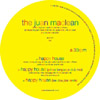 Our new, semi-regular feature of notable new dance singles continues with reviews of The Juan Maclean, Audion, Kelley Polar, Low Motion Disco, Goldfrapp and Ricardo Villalobos.
Our new, semi-regular feature of notable new dance singles continues with reviews of The Juan Maclean, Audion, Kelley Polar, Low Motion Disco, Goldfrapp and Ricardo Villalobos.
Summer is upon us again, and just as the multiplexes are being crammed full of big, dumb Hollywood blockbuster action films, so the stacks at your local 12" vinyl vendor are being stuffed full of big, dumb floor-fillers. This is not a bad thing at all, as even with climate change in full swing, summer is still the time for outdoor raves, tent parties, festivals, and destination clubs in tropical climes. With that in mind, here is a small selection dance singles that might be making the summer even hotter.
The Juan Maclean, "Happy House"
DFA
What a DJ needs for huge, mixed summer crowds are cuts with massive crossover appeal, and this long-awaited new 12" by The Juan Maclean more than fits the bill. From the beginning, the DFA label made its name on club music with a broad-based appeal, getting the normally stoic hipsters and indie rock kids to embrace disco and house music, as well as winning over many veterans of the dance scene. As far as I'm concerned, The Juan Maclean is the DFA's flagship act, consistently turning out stunning singles and remixes that bring a punk irreverance to classic electro, house and disco music that feels the truest to DFA's implicit mission statement. Juan's background as a member of rock bands has kept his compositions from going too far into the glittery oblivion, even on a single like "Happy House," a piano-led chunk of epic diva house that pulls a dynamic rabbit out of its hat about eight minutes into its 12-plus-minute running time. The track, especially the piano loop and rhythm section, bears more than a passing resemblance to Dubtribe Soundsystem's "Do It Now," a deep house floor-filler from Ibiza circa 2001. It's not clear whether it's a sample or an homage, but Juan Maclean's track is different enough—with its eclectic rhythm section, full female vocals by the awesome Nancy Whang, and penultimate "launch me into space" coda—that no one will be accusing Juan of plagiarism. Those worried that the title of this single indicates a capitulation to the best-forgotten 1990s "happy hardcore" style need not fear, as the title is actually a pun from the lyrics: "You brought me home to this happy house / You're the reason for the width of my smile." The track is pure crowd-pleasing ear candy: bongos, handclaps, cowbell and funky syncopated bass; and just in case you don't like house music, the track radically shift into cosmic, Giorgio Morodor-esque italodisco territory by the end. It's at least three different songs crammed into one epic side. The Prince Language Dub Mix is exactly what its name promises, a mellow reinterpolation of the track which loses the dynamics and eclecticism of the original, but gains sophistication and complexity. Lee Douglas' remix attempts a marriage of the track's various sections with some success, producing an infectious and hard-hitting track that may rival the original for DJ exposure in the coming months.
sample:
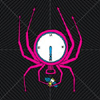 Audion, "Billy Says Go"
Audion, "Billy Says Go"
Spectral Sound
Matthew Dear's Asa Breed was my favorite album of last year, an unorthodox record that synthesized Dear's background in techno with his emerging pop tendencies, revealing hidden resonances between the two, and in the process creating an alternative historical track for both acid techno and electronic pop. However, as the music produced under his own name becomes increasingly focused on this techno-pop hybrid, it has been necessary for Dear's more minimalistic, purist, club music sensibilities to find their expression under the project names Audion, Jabberjaw and False. Of these three projects, the most consistently rewarding has been Audion, with a backlog of releases that redefine minimal techno for the coming aeon of noise, slamming together buzzsaw synths and gritty, mud-splattered rhythms for music that is textural, hard-edged and unbelievably infectious. "Billy Says Go" is no exception, all resonant thrumming kicks and crisp snares, joined by a dusty, off-kilter hand-played trebly synth. The effect is dark, hedonistic and weird-as-fuck, the perfect track for a 2:00 AM drop when all the drugs have kicked in and the floor is in danger of showing fatigue. "Snap Into It" is even darker, reformulating industrial music using the audio lexicon of techno, simultaneously soothing and sadistic, like the soft spoken leatherdaddy who ushers you into his sex sling with gentle, whispering persuasion. "Against All Odds" isn't quite as breathless as the first two tracks, although it does feature some stunning alien synth textures and coronas of ear-massaging static that push the track far past the neutral zone into the empty vacuum of deep space. Fans of experimental, industrial and noise music who scoff at the populist tendencies of techno would do well to discover the work of Matthew Dear. I won't say that there is a method to his madness, but there is certainly a madness in his method.
sample:
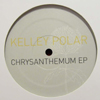 Kelley Polar, "Chrysanthemum"
Kelley Polar, "Chrysanthemum"
Environ
This single was actually released last year, so it hardly qualifies as "of the moment" in a genre that reinvents intself every two weeks, but I think it deserves some attention, especially following the recent release of Kelley Polar's full length album I Need You To Hold On While The Sky Is Falling. The full-length album is a masterpiece of high musical melodrama. Produced by the awesome Morgan Geist, I Need You is an extravagant, baroque concoction of disco, house and Arthur Russell-style classical flourishes, all permeated with mystical underpinnings that combine references to Greek mythology with esoteric musings on physics and the mind/body ontological split. Containing the two best album cuts with a fantastic remix, this 12" is a great way to gain access into the world of Kelley Polar without navigating the deep conceptual whirlpools and spiral jetties of the full-length album. "Chrysanthemum" chops up closely mic'd breathing, adds a plainly synthetic snare, before opening out into a full, resplendent synthscape, with Polar's vocals singing lyrics at once sensual and deeply fucked-up: "Make a chrysanthemum / of every human head / make a chrysanthemum / and kill them in their beds." It's indulgent in every possible way, and that's what I like about it. You have to respect an artist like Polar, a Juilliard-trained violinist, who leaps headfirst into dance music, taking the risk of producing something that might be mistaken for high camp in its unrestrained gorgeousness. "Rosenband" is more electropop than electro-disco (until the string quartet stabs come in at the chorus), and once again features lyrics that aestheticize murder at a Sophoclean pitch. Magic Tim's remix of "Rosenband" finishes out the single, creating a believable and eminently spinnable instrumental version of the song that would make it the perfect segue between a Metro Area cut and a Hercules and Love Affair track.
sample:
 Low Motion Disco, "Love Love Love" Parts 1 & 2
Low Motion Disco, "Love Love Love" Parts 1 & 2
Eskimo
Low Motion Disco is a new act on Eskimo Records, aiming for slightly lower-BPM excursions into high-tech disco music. Everything about the music is pure cliche, from the stereo-panned bongos to the repeating piano figures, but this is an advantage for this kind of music. Although it's hard to point to any elements of "Love Love Love" that I haven't heard a thousand times before, something about it just hits right, and the execution is spot on. From reading about this project, I was hoping for something a bit more primitive and loose, like the late-period disco-fied Can. However, that's not quite what we get here, and the effect of the slowness is simply to focus the listener in on the details of the groove, the full spectrum of each synthesizer stab, the resonating corridors of reverb and space echo. The real treat of these two 12" vinyl singles, however, are the remixes. The best is by new DFA signing Still Going, who change the song so much it is hardly recognizable, adding a 303-style acid bassline entirely absent from the original, and compounding layers of audio sediment to give the track an epic hugeness that sounds positively revelatory at high volumes. I nearly shit myself when the awesome guitar vamps came in at the six-minute mark. Holy fuck. Though Still Going have definitely created the floor-filler among the remixes, LSB's more faithful, uptempo take is no slouch either. Aeroplane's take is a contender as well, emphasizing the melodies and creating a Daft Punk-style tent-burner that is sure to get some asses moving. The only remix that doesn't work for me is the Soft Rocks remix, which adds the vocals of Kathy Diamond, but fails to add any intrigue whatsoever to the groove. I think we're going to be hearing a lot more from Low Motion Disco, especially after these remixes get passed through the crucible of summer DJ sets.
sample:
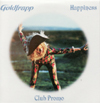 Goldfrapp, "Happiness"
Goldfrapp, "Happiness"
Mute
I should declare at the outset that I have never really warmed up to Goldfrapp. Ever since the music underwent a drastic transformation from the cinematic, Portishead-lite of Felt Mountain into the sleek, throbbing electro-disco of Black Cherry and Supernature, I've had Alison Goldfrapp and co. pegged as bandwagon-jumpers, and the music, while often more than competent, hasn't convinced me to think otherwise. However, she has always had remarkable taste in collaborators and remixers. The list of artists she has recruited to remix her tracks is breathtaking: Mantronix, Ewan Pearson, T. Raumschmiere, Benny Benassi, Jacques Lu Cont, Alan Braxe and Fred Falke, Phones, Tiefschwarz, the DFA, Carl Craig, The Flaming Lips, and recently, Hercules and Love Affair. Her new single from the Seventh Tree album is "Happiness," and in a typically incomprehensible Mute Records attempt to confuse the marketplace, there are at least six different versions of maxi CD singles, promos and limited 7 inches already out or on the way, each containing a slightly different set of remixes. The one I've got features a remix of "Happiness" by the awesome Beyond the Wizard's Sleeve (whose last release I reviewed here), a version of "Monster Love" credited as "Goldfrapp vs. Spiritualized," and a Yeasayer remix of "Eat Yourself." The BTWS remix is, not surprisingly, the standout here; a psychedelic reimagining of the original, emphasizing vintage organ sounds, backwards tracking and lysergic phasing. I'm consistently impressed by what Erol Alkan and Richard Norris accomplish with their remixes, being faithful to the originals while introducing a chaotic element that makes everything sound unstuck in time. "Monster Love" finds J. Spacemen turnign Goldfrapp's track into, for all intents and purposes, a Spiritualized song. That means zero dancefloor potential, I'm afraid. The same with Yeasayer's remix, which steals some loops from the original and creates a fun little piece with no groove, and a running time of 2:25. So, the winner here by a landslide is BTWS, whose style is so unique as to be instantly recognizable, even when remixing an artist as far afield as Goldfrapp.
sample:
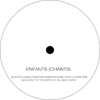 Ricardo Villalobos, "Enfants"
Ricardo Villalobos, "Enfants"
Sei Es Drum
I've been totally underwhelmed by minimal house in all its iterations. Although I have occasionally heard a track such as Ricardo Villalobos' "Easy Lee" and found it quite appealing, I find long DJ sets of this sort of thing deadly. Villalobos' mega-hyped installment in the Fabric series was released recently to near-total acclaim, which I felt was incomprehensible, given that Villalobos broke the rules of a DJ mix by playing nearly exclusively his own music, and boring music at that. Now comes "Enfants," which got a lot of pre-release hype by bloggers like Philip Sherburne who never tire of enthusing over merely competent music. Though "Enfants" clearly works as a DJ tool (more on that later), I see it as the absolute creative nadir of minimalism as a dance genre. Villalobos gives us 17 minutes of a four note piano loop, a caveman-simple rhythm, and a choir of children chanting repetitively in some mysterious language. No development, no melodies, no transitions, not even a goddamned kick drum for fuck's sake! Add to this insult the fact that the piano riff is lifted from Nina Simone's "Sinnerman," and the chanting is taken directly from Christian Vander's 1995 work Baba Yaga La Sorciere, a version of Magma's seminal album Mekanik Destruktiw Kommandoh rearranged for a children's chorus (I guess that makes the language Kobaian). To be fair, Villalobos does admit that his track is "based on" Vander's piece, but he doesn't make it clear that it is a direct, unreworked sample, or that his piano loop bears more than a passing resemblance to a very familiar Nina Simone song. I will say that this single does work as a DJ tool, as it can be easily mixed with something else heavy on low-end, bassline and kick drums, and in that context I could imagine it being very effective. However, Villalobos isn't supposed to be producing DJ tools and loop records, he's supposed to be producing dance music. I'm afraid this doesn't qualify. The less said about the B-side, the better.
sample:
Read More
- Administrator
- Albums and Singles
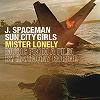 It is difficult to judge a soundtrack when listening to it in isolation from the movie it is meant to accompany. This album, roughly half and half the work of Jason Pierce (under his J. Spaceman pseudonym) and the Sun City Girls, is enjoyable by its own merits but unfortunately has moments where the music sounds incomplete, the necessary images absent.
It is difficult to judge a soundtrack when listening to it in isolation from the movie it is meant to accompany. This album, roughly half and half the work of Jason Pierce (under his J. Spaceman pseudonym) and the Sun City Girls, is enjoyable by its own merits but unfortunately has moments where the music sounds incomplete, the necessary images absent.
Pierce's contributions are mostly a far cry from his style of song writing in Spiritualized (and millions of light years away from Spacemen 3). Instead of the lush and powerful arrangements of his main breadwinning enterprise, the pieces here range from simple musical sketches, usually brief but enjoyable, to strange mood setters, like "Stooges Harmonica," that do not have enough oomph in them to stand on their own without the movie to go with them. Occasionally the melodic style that characterises Pierce's work in Spiritualized appears in unusual contexts such as the pastoral strings of "Garden Walk." However, the psychedelic overload that draws me to Pierce's music is absent. It is not a bad thing by any means; it shows another side to an already impressive artist.
Pierce is not the only one breaking away from his usual modus operandi; the Sun City Girls' pieces are quite different from what I normally encounter from them (but granted I'm not a massive collector of their work). The gentle, hushed air of "3D Girls" sits in between some of Pierce's best and least impressive pieces; here the Sun City Girls sound like they might overpower whatever scene is on the screen at that time. The highlight of the album comes with their rendition of the song "Lonely," the viola-led arrangement is a bittersweet take on the often schmaltzy classic. The album's closer, "Farewell," is another beautiful piece that not only works as music for the end of a film but also as a poignant goodbye to Charles Gocher.
The soundtrack to Mister Lonely is not an essential purchase for devotees of either Pierce or the Sun City Girls although it is unlikely that anyone would be totally disappointed with it. I could do without the chunks of dialogue dotted throughout the disc (even if one of them is recited by Werner Herzog). Aside from these, which in fairness only add up to a small fraction of the total run time, and the odd dull track, this is a bit of an oddity but it is at the least an enjoyable oddity.
samples:
- J. Spaceman, "Garden Walk"
- Sun City Girls, "Mr Lonely Viola"
- Sun City Girls, "Farewell"
Read More
- Administrator
- Albums and Singles
 Afrobeat has always been too far eclectic for simple classification, destined to confound those who prefer their music neatly categorized into genre buckets. That special quality makes this compilation of previously vinyl-only remixes and reinterpretations of recent material from the renowned percussionist all the more fitting.
Afrobeat has always been too far eclectic for simple classification, destined to confound those who prefer their music neatly categorized into genre buckets. That special quality makes this compilation of previously vinyl-only remixes and reinterpretations of recent material from the renowned percussionist all the more fitting.
Hailed for his work with Fela Kuti's Africa 70 as well as his first trio of solo albums, Tony Allen may actually have been more important than even the late frontman, as his inspired, inventive style of playing all-but defined Afrobeat, something that none of the surviving Kuti clan can claim despite their continued commitment to preserving Fela's legacy. In recent years, the ubiquitous Damon Albarn has brought Allen to all new audiences as part of the unlikely supergroup The Good, The Bad and The Queen, as well as a full length album and subsequent 12” records released through the Honest Jon's label, several of which are compiled here. As made clear with Lagos Shake, Allen's admirers are hardly limited to Britpop royalty. Here, a diverse group of artists grab hold of his 2006 full-length Lagos No Shaking, adding elements of this contemporary work to their own. As should be expected, some rely heavily on the source material while others choose to sprinkle choice bits of Allen into their contributions. Still, whether it be the lively jazz on Salah Ragab's take on “Ole” or the Bonde Do Role's snapping carioca electrofunk reshape of “Awa Na Re” the music splendidly revels in its freedom and hardly ever loses momentum.
Unlike so many remix discs, no one style dominates Lagos Shake. Honest Jon's labelmates Wareika Hill Sounds present a tribal luminosity on “Reggae Land Dub” while indie producers like Diplo and Newham Generals mold Allen's originals into subversive clubwise cut-up fare and (thankfully) instrumental South London grime, respectively. Both halves of the Basic Channel / Rhythm and Sound partnership take a crack at transforming Allen for the dancefloor. Mark Ernestus lays down a disco dub that's as starkly minimal as it is silky and smooth. Superior to this fine cut is Moritz von Oswald's ten-minute long mix of “Ole,” a sonic odyssey that starts with a steel drum performance in the echo chamber that steadily climbs into transcendent Sunday afternoon house adorned with wistful pads and snippets of Rolling Dollar’s voice.
Yet perhaps the real show stealer comes from techno icon Carl Craig, who remixes “Kilode” into a positively exuberant blend of Detroit-friendly stabs, diva-quality vocals, and broken breakbeats. Though discerning DJs already have this killer in their crate, the CD release offers a potentially greater audience for such a warm track. Lagos Shake hits all the right notes for the coming summer season.
samples:
Read More
- Administrator
- Albums and Singles
 Scan the obsessive posts on the handful of dedicated roots reggae forums online and the name Bunny "Striker" Lee will inevitable crop up—and rightly so. Focusing solely on his productions between 1973 and 1979, this compilation may not be even remotely exhaustive, but it provides a worthwhile if slightly forgettable gateway into the influential producer's sizeable body of work.
Scan the obsessive posts on the handful of dedicated roots reggae forums online and the name Bunny "Striker" Lee will inevitable crop up—and rightly so. Focusing solely on his productions between 1973 and 1979, this compilation may not be even remotely exhaustive, but it provides a worthwhile if slightly forgettable gateway into the influential producer's sizeable body of work.
Boasting contributions from big names such as Horace Andy and Delroy Wilson alongside buried treasures from lesser-known singers, The Mighty Striker Shoots At Hits pays tribute to one of the few surviving producers from the most celebrated generation of Jamaican music. A sequel, more or less, to the Moll-Selekta label's 2005 release The Bunny Lee Rocksteady Years, this new set exemplifies that pivotal time where Rastafarian lyrics themes increasingly replaced the more conventional subjects that preceded them in ska and rocksteady. The title, packaging and design all nod to Lee’s affinity for Westerns, and, while I’m certain that these tracks feature session players recognizable to fans of this exciting decade in reggae music, the liner notes inexplicably decline to acknowledge them in favor of brief, unnecessary biographies of Lee and the singers.
Dismayingly, the collection largely skimps on lengthy showcases in favor of far shorter 7" sides, especially considering his noteworthy involvement with dub pioneer King Tubby, a frequent engineer and collaborator on his sessions. Some fortunate exceptions to this are the robust extended mix of Leroy Smart's "Love In My Heart" and the aforementioned Andy's "I Don't Want To Be Left Outside," his captivating voice bouncing off the studio walls thanks to an inspired, heavenly usage of echo effects. Still, perhaps the biggest fault of The Mighty Striker Shoots At Hits is the mysterious exclusion of his DJ productions of the period. With only a single cut featuring toaster Prince Ras Murray included here, this vital portion of the man's career seems woefully overlooked. Hopefully another volume that highlights these works will follow this one.
Still, there's plenty of good to go with the bad here. Hortense Ellis, sister of the sensational Alton Ellis, covers her sibling's legendary hit "I'm Still In Love" masterfully and memorably in a lover's rock style, perhaps dwarfing the original in the eyes of many collectors. While the now apparently defunct Blood And Fire imprint gave part of Johnny Clarke's collaborative with Lee discography some decent treatment with the CD release of Dreader Dread 1976-1978 roughly a decade ago, the two tracks featured here ("Peace And Love In The Ghetto," "Rockers For Me") did not appear on that set and thus should appeal to collectors and completists. Overall, though, there’s just not enough striking material from the Striker to make this an essential purchase.
samples:
- Horace Andy - I Don't Want To Be Left Outside
- Hortense Ellis - I'm Still In Love
- Johnny Clarke - Rockers For Me
Read More
- Administrator
- Albums and Singles
 Another V/VM alter-ego uses analog and digital sources to create vivid impressions of a specific landscape of Northern England. The mood is akin to a wet cold late-winter trek across the harshly beautiful terrain and the rare prettier music captures precious moments when the sun breaks through.
Another V/VM alter-ego uses analog and digital sources to create vivid impressions of a specific landscape of Northern England. The mood is akin to a wet cold late-winter trek across the harshly beautiful terrain and the rare prettier music captures precious moments when the sun breaks through.
Cheekily, Bleaklow is available in either the ‘complete’ or ‘extended’ versions and there are additional downloads at the V/VM site. I am reviewing the former and the eleven tracks are all worthwhile. The dark and bleak atmospheres refer to the uppermost section of the Peak district between Lancashire and Yorkshire where, far from manicured gardens and agri-business, are some of the loneliest yet loveliest parts of England. The sweeping moors, winding paths, the craggy peaks and huge implacable stones exude an impressive permanence easily outstripping our meager human lifespan.
The album's impressions have a convincing ring of truth to them. This may be partly due to geographical and psychological distance. That is to say, the music benefits from the fact that The Stranger probably resides in Berlin and is gazing back home with an enhanced clarity of vision. In that sense, the recordings recall John Cowper Powys’ novels set in his native England written while he was exiled in the United States. Bleaklow also resembles (as a negative relates to a photograph) the decidedly jazz-classical approach of Old Heartland, Ian Carr’s shadowy portrait of the English countryside.
The overall sound here is as malevolent and nostalgic as The Caretaker (another V/VM favorite). The Caretaker revels in the dusty ballrooms, haunted halls and dance floors of memory—as is appropriate for an artist with origins broadly in the movie The Shining. By contrast, The Stranger concentrates on raw, bitter, splendidly egalitarian weather and its simultaneously battering and uplifting effect on humans.
The Stranger manages to convey nature at its most desolate and oppressive yet lying within reach of cheery humanity. This is partly achieved by naming tracks for Bob Greaves, retired reporter and Granada television broadcaster, as well as (beyond the ‘complete’ disc) for Bob Smithies the crossword compiler know as Bunthorne. The notion may be that the landscape has shaped people with the strength and wit to recognize its rugged splendor. The opening piece “Something To Do With Death” has an abrasive and somnambulant quality suggesting equal parts defiance, grandeur and gleeful derision. “Kirkbymoorside” is known as "the gateway to the Moors" and the track sounds suitably full of portent. Throughout Bleaklow there is an absence of prettiness which should definitely appeal to the perverse enjoyment of those who venture out in all weathers with Ordanance Survey map, mint cake, flask of tea, copy of The Good Pub Guide and the motto: "There's no such thing as bad weather, only inappropriate clothing..."
“Inverted Burial” manages to allude to a concept mentioned by Jonathon Swift in Gulliver’s Travels. Suicides have been buried in that decidedly non-restful position (as a post-mortem punishment) and English millenarian sects believed that this was the best position to be interred, since come the post-Apocalyptic resurrection the world would be turned upside down and the reborn would be upright! Of course, whenever the notions of a moor and of burial are mentioned in certain parts of Northern England the unfortunates slaughtered by Brady and Hindley cross the minds of the generation who recall those dreadful crimes. But hey, it’s not all doom and gloom from the tomb, “Solemn Dedication” has a slow ghastly thumping beat and ghostly quivering atmosphere that could conceivably get people twitching, well maybe just on the dance floors of Berlin, or up at the Overlook Hotel.
samples:
Read More
- Administrator
- Albums and Singles
| FAUST / NWW - DISCONNECTED SPECIAL DOUBLE VINYL LP | |
| NURSE WITH WOUND - THE BACTERIA MAGNET MINI LP, VINYL ONLY | |
| NURSE WITH WOUND - HUFFIN' RAG BLUES ETC "CANNED" LTD EDITION CD BOX SET. 100 COPIES, MAIL ORDER ONLY. | |
| NURSE WITH WOUND - HUFFIN' RAG BLUES CD | |
| ** special offer, anybody ordering all three of these releases can choose any other Dirter CD free of charge. (Dirter label CD only)** | |
Read More
- Administrator
- Albums and Singles
 The result of what could only be described as serendipity, an ad-hoc trio of current/former Boston luminaries Vic Rawlings and Michael Bullock joined up with Lebanese trumpet player Mazen Kerbaj on a short tour after a single gig together, two sets of which are presented on this disc. Although recorded only five days apart, the two shows are actually quite different in character and feel, but both show improvisation at its best.
The result of what could only be described as serendipity, an ad-hoc trio of current/former Boston luminaries Vic Rawlings and Michael Bullock joined up with Lebanese trumpet player Mazen Kerbaj on a short tour after a single gig together, two sets of which are presented on this disc. Although recorded only five days apart, the two shows are actually quite different in character and feel, but both show improvisation at its best.
The shorter set, recorded in Chicago and clocking in at around 13 minutes appears mostly as an exercise in restraint. The low bass rumbles from Bullock stay sustained throughout most of the piece, heavy tones that never quite let up but keep vibrating on and on are met with rough, squeaky sounds which could be Rawlings’ various electronic gear, or Kerbaj’s treated trumpet, I personally don’t know. These harsh tones stay controlled, however, and there is a feeling that they could burst forth in pure noise at any given time. Ultra high frequency blasts of feedback and electronic tones cut through once in awhile, along with low scrapes and rattles that sound like poor stringed instruments being abused.
The longer set, about a half hour and from Washington, DC, shows less restraint and more full on aggressive improvising. Perhaps the boys had been in the van together a little too long by this point and tensions were running high. Regardless, there is a great deal more chaos in this set. The opening is more of a clash of sounds, and the overall tone is one that is more aggressive and commanding. Bullock’s feedback is more prominent throughout the piece, and has a louder and more violent tone than in the previous piece. The feedback is tightly reigned and controlled though, so rather than just random noise, it is as much of an instrument as anything else.
Electronic elements are more of a focus here as well. What could be Kerbaj’s treated horns or Rawlings’ equipment has a spacey, pulsating character that swirls around the feedback, occasionally swelling to more piercing tones that give the feedback good competition for harshness, and then at other points sinking back more quietly into a fuzzy analog haze. The metallic string scraping also is more of a focal point this time, and there are some moments where Kerbaj’s squawking, sputtering trumpet appears relatively untreated.
Being that it is somewhat more aggressive in nature, I found this to be the more interesting of the two sets, because the natural tension between improvisers adds a certain level of dynamism and chaos that only makes the work that much more interesting. Considering these guys had only played as a trio once before this tour shows their skills at improvisation is based more on natural chemistry than anything forced, and the output makes that all the more apparent.
samples:
- WNUR, Chicago IL
- Warehouse Next Door, Washington DC (Excerpt 1)
- Warehouse Next Door, Washington DC (Excerpt 2)
Read More
- Administrator
- Albums and Singles
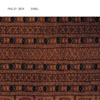 Run DMC once said that a DJ could be a band, or at least that's how Chuck D paraphrased them. Dissecting that statement, it is perfectly logical to assume that a slab of vinyl could be an instrument, and this new disc from Philip Jeck proves that. Working live with record players, junk shop records, old Casio SK keyboards and recorders, Jeck has made a warm, nostalgic album that both personal and inviting.
Run DMC once said that a DJ could be a band, or at least that's how Chuck D paraphrased them. Dissecting that statement, it is perfectly logical to assume that a slab of vinyl could be an instrument, and this new disc from Philip Jeck proves that. Working live with record players, junk shop records, old Casio SK keyboards and recorders, Jeck has made a warm, nostalgic album that both personal and inviting.
For the most part, it is near impossible to tell that other people’s music was used in the creation of Sand. While far beyond the likes of simple sampling, Jeck did largely use prerecorded material as his raw sound sources, but the way he reshapes the sound into entirely new compositions is a testament to his talent and artistry. The swirling mass of clicks and pops that make up the basis of “Unveiled” could be simply run-out grooves amplified, or could be something else entirely. And, I doubt the chimes and symphonic loops that occasionally rear their melodic heads among the raw, rough moments sound completely different out of context than they originally did.
There are a few repeated elements throughout the disc, the chimes from the first track reappear in “Chimes Again” (imagine that), and horn fanfares are used in three tracks overall, “Fanfares,” “Fanfares Forward,” and “Fanfares Over.” The former two allow the horn bursts to be prominent in the mix alongside electronic squeals and harsher elements. “Fanfares Over” has the horn sounds completely trashed and cut up over top of machine gun tribal percussion and loops like swarms of killer bees overhead. Throughout its 11 minute duration the track stays dynamic, but also has some repeated segments that show a great attention to musical structure and elements that could easily be otherwise ignored in this context.
Most of the seven tracks on here feature that balance between abstraction and musicality, as well as an equilibrium between outright aggressive noise and careful, delicate melody. The aforementioned “Chime Again” features a lot of analog grime and distortion, but also beautiful, haunting melodies excised from the recordings and carefully presented as the calm within the storm. The soft crackles and buried tones of “Residue” become disarming with the quick transitions into jarring, harsher elements.
These gentle elements give a more inviting, personal character to Sand that is often lost in works such as these. The artwork, as always, by Jon Wozencroft, adds to this with its textural photographs that could be the wallpaper in an older family members home or something else that is warm and familiar, which is a perfect metaphor for this album.
samples:
Read More
- Administrator
- Albums and Singles
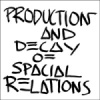 While Z'EV has been performing since the 1970s, this emerged back in 1981 on Backlash Records as his first studio album. To celebrate the 25th anniversary of its release, German-based label Die Stadt has reissued it as a limited CD, housed in the original LP-sized packaging along with a hand-made insert.
While Z'EV has been performing since the 1970s, this emerged back in 1981 on Backlash Records as his first studio album. To celebrate the 25th anniversary of its release, German-based label Die Stadt has reissued it as a limited CD, housed in the original LP-sized packaging along with a hand-made insert.
In many respects, this was the album that initiated his launch into the forefront of the ‘industrial music’ revolution, a trajectory that has culminated in his being regarded as one of the pioneers of the genre; it could almost be said that he was responsible for initiating a great part of the ‘industrial music’ impulse itself. He is also credited with introducing the tribal element into the genre’s repertoire, perhaps in an effort to imbue it with a much more visceral and authentic voice, if not a species of a back-to-basics aesthetic. These facets of his music are readily apparent from even an initial hearing of Production and Decay, the tribal impetus especially being to the fore in many of the pieces, the tensions being emphasised by the friction exhibited by the ‘primitive’ rhythms created using metallic and non-natural percussive sound sources, part of the Western technological palette so to speak. Given also that this was recorded over a period of two days (May 12th and 13th, 1981) and also given the state of recording technology at that time as compared to the present, a frantic immediacy and rawness are the hallmarks here, as well as a sense of the shambolic, cluttered, and unpolished, a distinct antithesis to the kind of creations of the almost ubiquitous laptop artist of today. I particularly felt, especially on the original closing track “Ook Uit,” a driving preternatural impulse, a kind of supernatural, shamanic compulsion that directed the hands of the creators, almost that Z’EV and cohorts were conduits through which something else was speaking.
Twenty-five years after the fact and things have moved on for Z'EV, in terms of aesthetic and philosophical development, and most especially in the sphere of technology, defined here by six recodings of the original songs, collectively entitled Reproduction and Decay of Spatial Relations (note also the different spellings of spacial/spatial). These I found to be somewhat of a disappointment, principally because the power so obviously and openly displayed on the original recordings was conspicuously absent—the ‘spirit’ of the original had been leached out of it. The danger was always that putting the two sets of recordings right next to each other would only magnify all the inherent differences spectacularly, and so it has proved—certainly to my ears I didn’t get the same frisson of excitement and energy from the re-imaginings as I did the originals. Granted, in a different context, i.e. had I been asked to just review the second set on their own, then indubitably I would have enjoyed the pieces in their own right. Even noting the fact that I was disappointed by the remixed set of six songs, as a document of change and development born of experience spiritually and technically, I won’t deny that this possesses an authority and legitimacy all of its own.
In addition to the ‘recodings’, the first 500 comes with a bonus CD, containing three tracks of archive material originally recorded on tape cassette, entitled That Was The Year That Was What It Was and accompanied by all the sound quality issues inherent in the medium. As is pointedly emphasised in the press-release, ‘... cassette was THE ubiquitous storage medium...’ back then, famously contributing to the flow of information in closed societies such as the ‘samizdat’ cassette culture in Soviet Russia. As such then, the quality on here does leave something to be desired, but leaving aside our digital-age prejudices for a moment, these can indeed be seen as documents of an age where all this was considered to be somewhere on the cutting edge and so deserve our consideration and attention. The performances featured are: “The sound of the light of metal for Jackson Mac Low” (a ‘wild-style’ Z’EV performance at the Madison Theater, NYC, 6th December 1982) and “element/L,” culled from the Wipe Out sessions recorded in 1982, also by Z’EV. Also included is “Past Todays” by UNS, recorded 24th May ’82, and featuring vocals by the Sha’ul Z’EV persona. As indicated, the quality is nowhere the best; that said, these recordings are very noteworthy in their own right and, as is also pointed out in the same press-release, these sound documents do indeed deserve to be heard.
samples:
Read More



